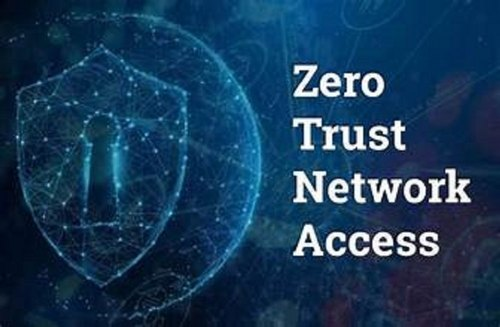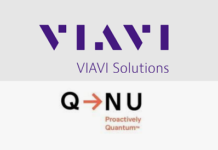For decades, enterprises built security on a flawed assumption — that everything inside the network could be trusted.
That assumption no longer holds. Remote work, cloud migration, and SaaS adoption have blurred every perimeter we once defended.
Zero Trust Network Access (ZTNA) is not a reaction to this change; it’s a strategic reimagination of access itself. It replaces the castle-and-moat mindset with one rule that governs the modern digital enterprise: no one is trusted by default — not users, not devices, not even internal applications.
Ready to explore how Zero Trust can secure your hybrid enterprise?
Connect with NetNXT’s cybersecurity experts to design a scalable, identity-based access framework powered by Cato Networks partner.
What Is Zero Trust Network Access (ZTNA)?
ZTNA is a cloud-native security framework that enforces identity-based, context-aware access to applications and data — no matter where users connect from.
Instead of giving a user access to an entire network like a VPN does, ZTNA grants access only to specific applications after continuously verifying the user’s identity, device, and context. Every request is authenticated, authorized, and encrypted.
In practice, it creates a secure, invisible access layer — attackers can’t exploit what they can’t see.
Why Organizations Are Moving Toward Zero Trust
Trust has become the weakest link in enterprise defense. A single compromised credential can expose an entire environment.
ZTNA addresses that risk by minimizing exposure, enforcing continuous verification, and aligning perfectly with hybrid and multi-cloud realities.
Here’s what’s driving adoption across industries:
- Remote-first operations: Distributed teams need access that’s both frictionless and secure.
- Cloud and SaaS sprawl: Security must follow the user, not stay bound to a datacenter.
- Regulatory compliance: Frameworks like NIST 800-207 and ISO 27001 are leaning toward Zero Trust principles.
- Threat sophistication: Lateral movement attacks and credential abuse demand finer access control.
ZTNA has shifted from a “nice to have” to a core cybersecurity strategy for digital enterprises.
How ZTNA Works — Simplified
Instead of connecting users to the network, ZTNA connects them to the application.
The control plane and data plane are separated, which allows intelligent decision-making before any data exchange begins.
Here’s how it operates:
- Identity Verification: Every login request is validated via SSO or MFA before access.
- Device Hygiene Check: The system assesses device posture — OS version, patch level, encryption status.
- Policy Decision: Contextual policies (location, time, role, risk score) decide access rights.
- App-specific Connection: A secure, ephemeral tunnel is established only to the requested app.
- Continuous Monitoring: Behavioral analytics watch for anomalies throughout the session.
This model ensures that security decisions are dynamic and session-aware — trust is earned, not granted.
Core Features That Define Effective ZTNA
A mature Zero Trust Network Access solution should deliver:
- Identity-Driven Control: Policies mapped to users, not IP ranges.
- Adaptive Access: Context-sensitive, risk-aware authentication.
- Invisible Architecture: Applications hidden from public discovery.
- Unified Security Posture: Integrated visibility across endpoints, apps, and clouds.
- Encrypted, Direct-to-App Connections: Zero exposure to the network core.
- Scalable Cloud Delivery: Works seamlessly across regions and cloud environments.
The Business Case for ZTNA
Enterprises that deploy ZTNA aren’t just modernizing security — they’re transforming operational agility.
Benefits include:
- Reduced Attack Surface: Eliminates the internal visibility attackers exploit.
- Operational Efficiency: No more VPN overhead or complex routing policies.
- Enhanced User Experience: Secure access without latency or friction.
- Cloud Readiness: Security that evolves as your cloud footprint expands.
- Lower Risk of Breach: Real-time monitoring and segmentation limit potential impact.
In effect, ZTNA allows IT leaders to align security with business speed — rather than slow it down.
Industries Where ZTNA Delivers Maximum Impact
ZTNA’s adaptability makes it a cornerstone for industries handling high-value or regulated data:
- Financial Services: Prevent insider misuse and meet compliance mandates.
- Healthcare: Protect patient data while supporting telehealth access.
- SaaS & Tech: Enable developer access to cloud workloads securely.
- Manufacturing: Safeguard IoT-connected systems across global sites.
- Education: Protect remote learning systems and research assets.
Wherever data moves, ZTNA follows — securing access without borders.
Why NetNXT Is the Right ZTNA Partner
Deploying ZTNA isn’t just about adopting a tool — it’s about integrating it into your entire security posture.
NetNXT, as a trusted Cato Networks Partner, delivers Zero Trust Network Access that’s fully integrated within a Secure Access Service Edge (SASE) framework.
By combining ZTNA, SD-WAN, and real-time threat detection under one cloud-delivered platform, NetNXT enables organizations to:
- Unify access control across users, devices, and applications.
- Gain complete visibility into network traffic.
- Simplify security management without compromising performance.
Final Takeaway: Zero Trust Is No Longer Optional
Every enterprise breach tells the same story — someone trusted the wrong entity.
Zero Trust Network Access changes that narrative by assuming no one is safe until proven so.
With the right architecture and the right partner, ZTNA doesn’t just protect your business — it future-proofs it.


















